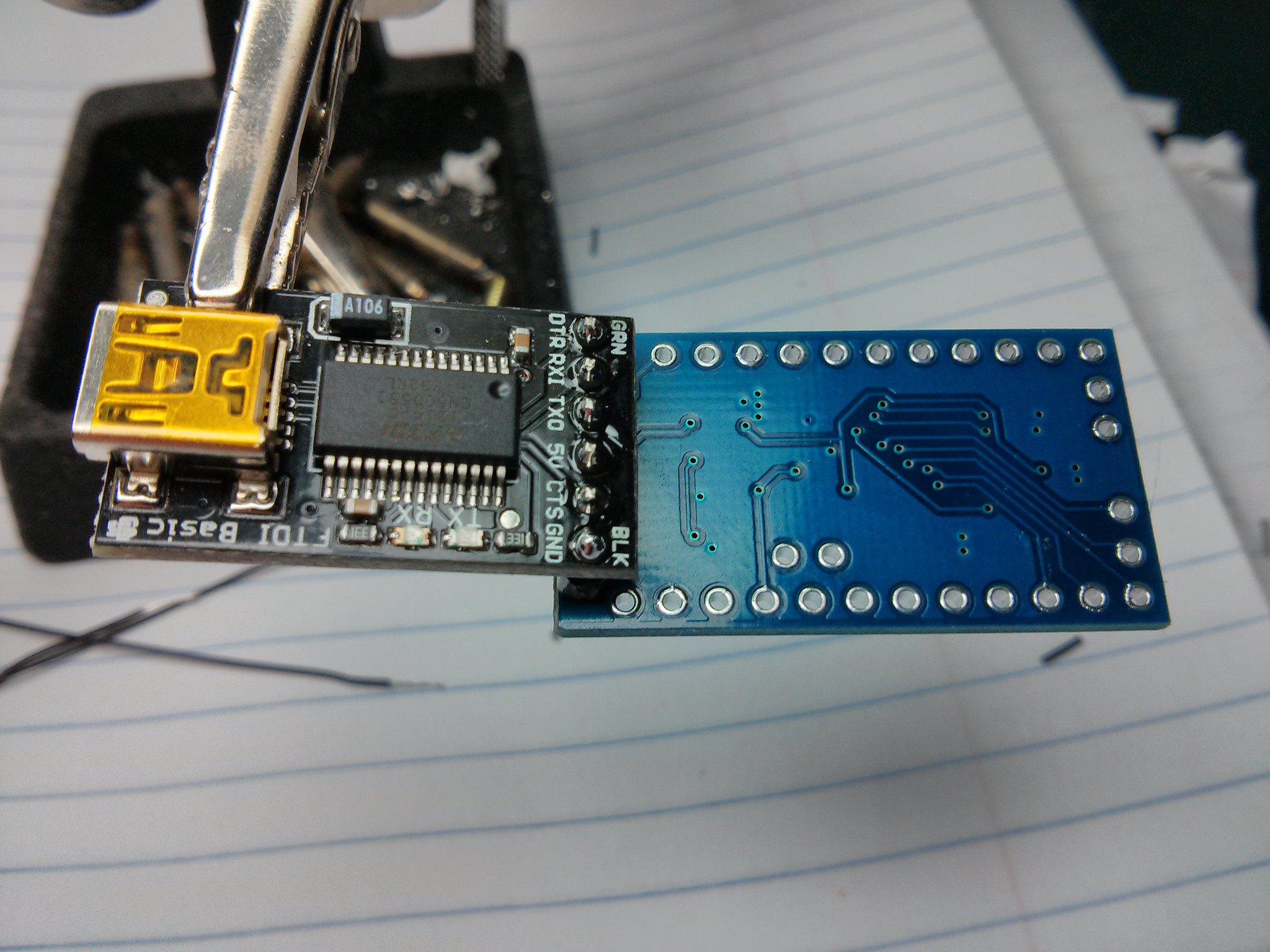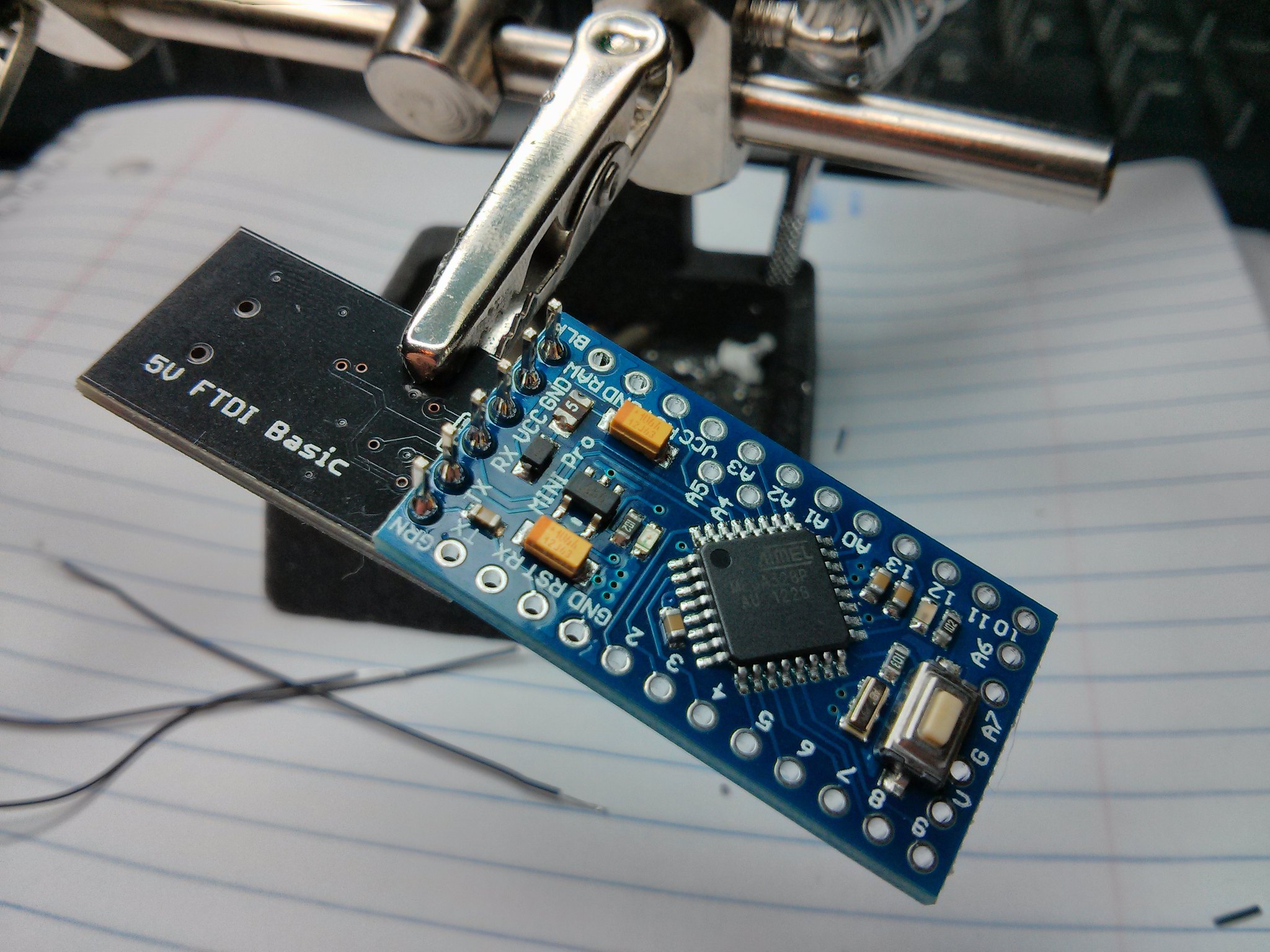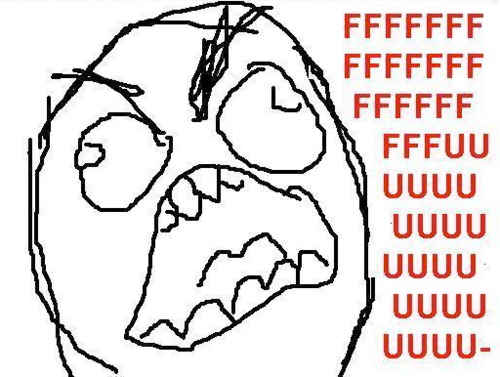I just rounded up all the necessary components for my adruinoboy and I need some help because I'm relatively new to microcontrollers.
I'm using an Adruino pro mini 5V that is hooked up to a 5V ftdi basic then into a usb port into my mac.
For simplicities sake, I'm running Windows XP thru VMFusionware and trying to program the adruinoboy sketch files with adruino software provided by their website.
So I click open>Desktop\Aruinoboy1_2_3\Arduinoboy1_2_3\Arduinoboy1_2_3.ino
Then have tools>board set to pro mini 5v atmega328
also set tools>com1
As far as the tools>programmer> ? I have no idea which setting I need but I tried them all and butt-kiss.
Now when I hit upload it starts then ends with "avrdude: stk500_getsync(): not in sync: resp=0x00"
I'm not quite sure where to go from here...
Anybody have any experience programming pro mini's with arduinoboy software that'd be glad to help, please?
--------
Edit: I have programmed .hex files burning them to microcontroller chips like the atmega8 before but I've seem to reach a bump in the road on this one.
Here is photos of how I've soldered the FTDI basic to the backside of the Arduino Pro Mini, I do believe its correct but this is my first Arduino device.

The FTDI Basic

The Arduino Pro Mini





